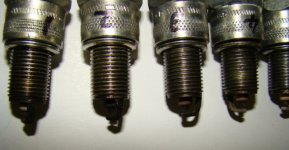Johnny
Darth Vader
Offline
Getting ready to take compression readings on my BJ7 and in the shop manual General Data (page 10) they list "B.M.E.P. pressure as 142 psi at 2700 rpm. What does that mean?
Under cranking pressure they list 175 psi, I'm going to assume that is what I'm hoping to find. Assuming a minimal amount of wear what do you think would be an acceptable reading? There seems to be a lot of 'blow-by' coming from the engine.
Under cranking pressure they list 175 psi, I'm going to assume that is what I'm hoping to find. Assuming a minimal amount of wear what do you think would be an acceptable reading? There seems to be a lot of 'blow-by' coming from the engine.

 Hi Guest!
Hi Guest!

 smilie in place of the real @
smilie in place of the real @
 Pretty Please - add it to our Events forum(s) and add to the calendar! >>
Pretty Please - add it to our Events forum(s) and add to the calendar! >> 





